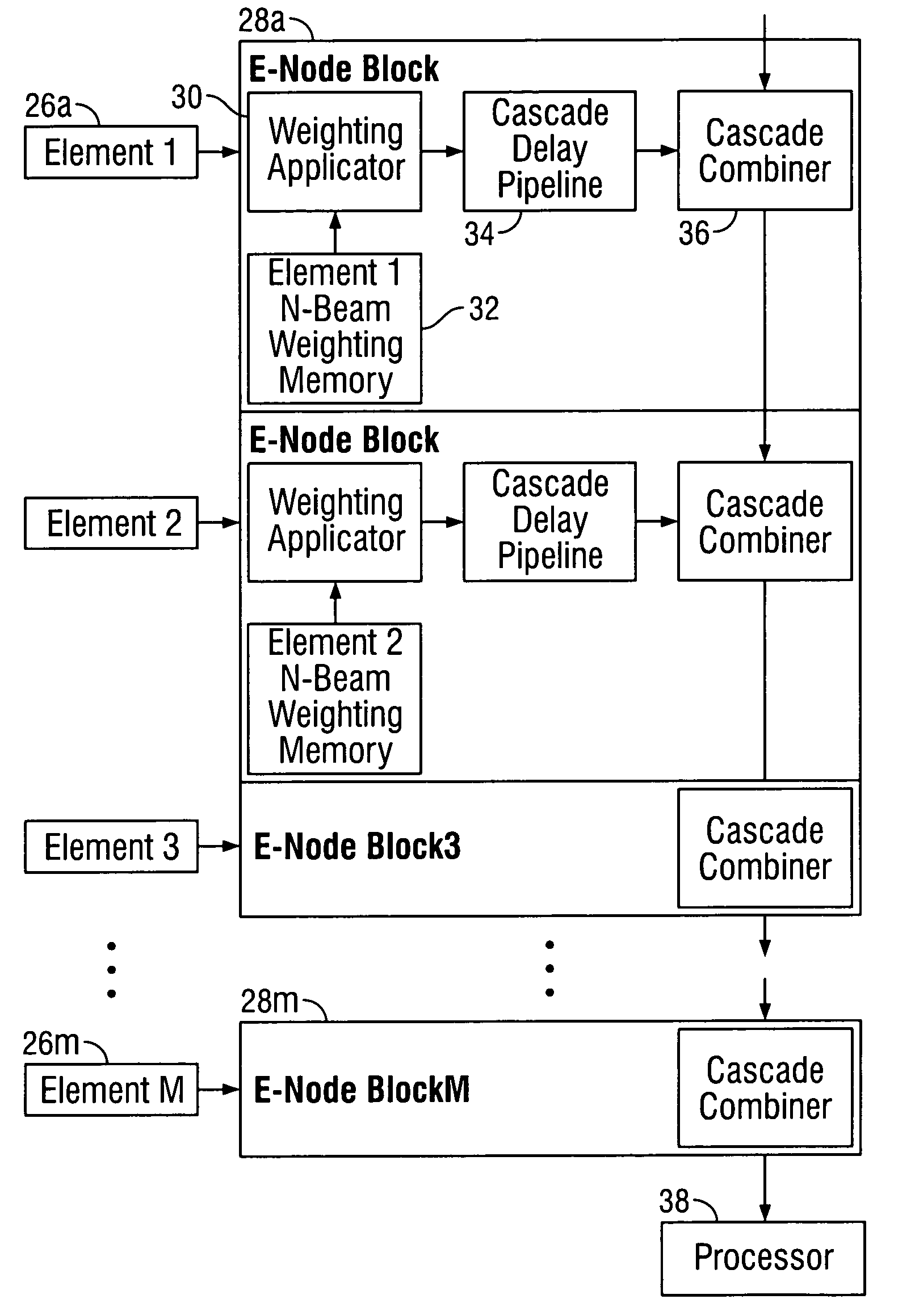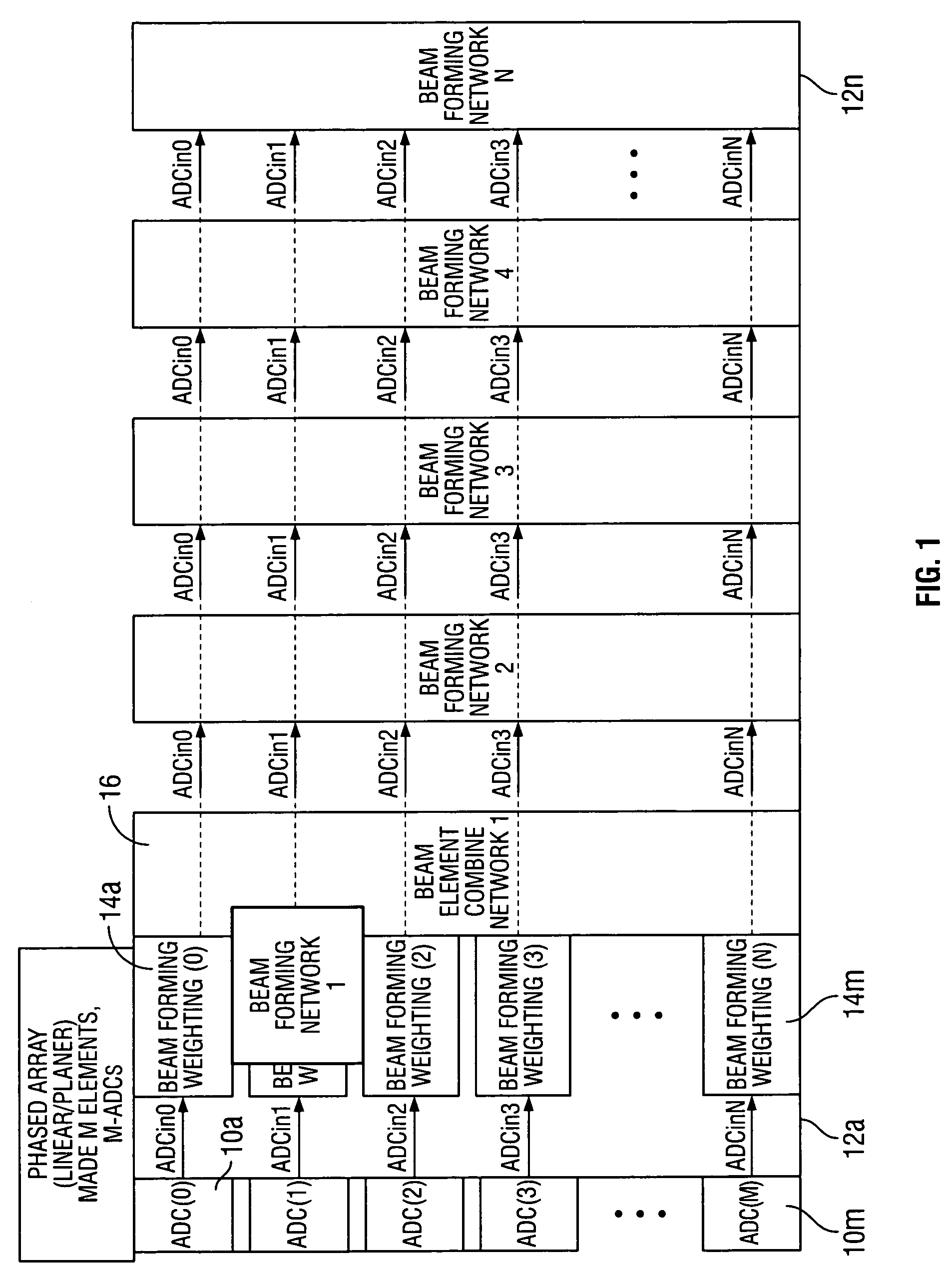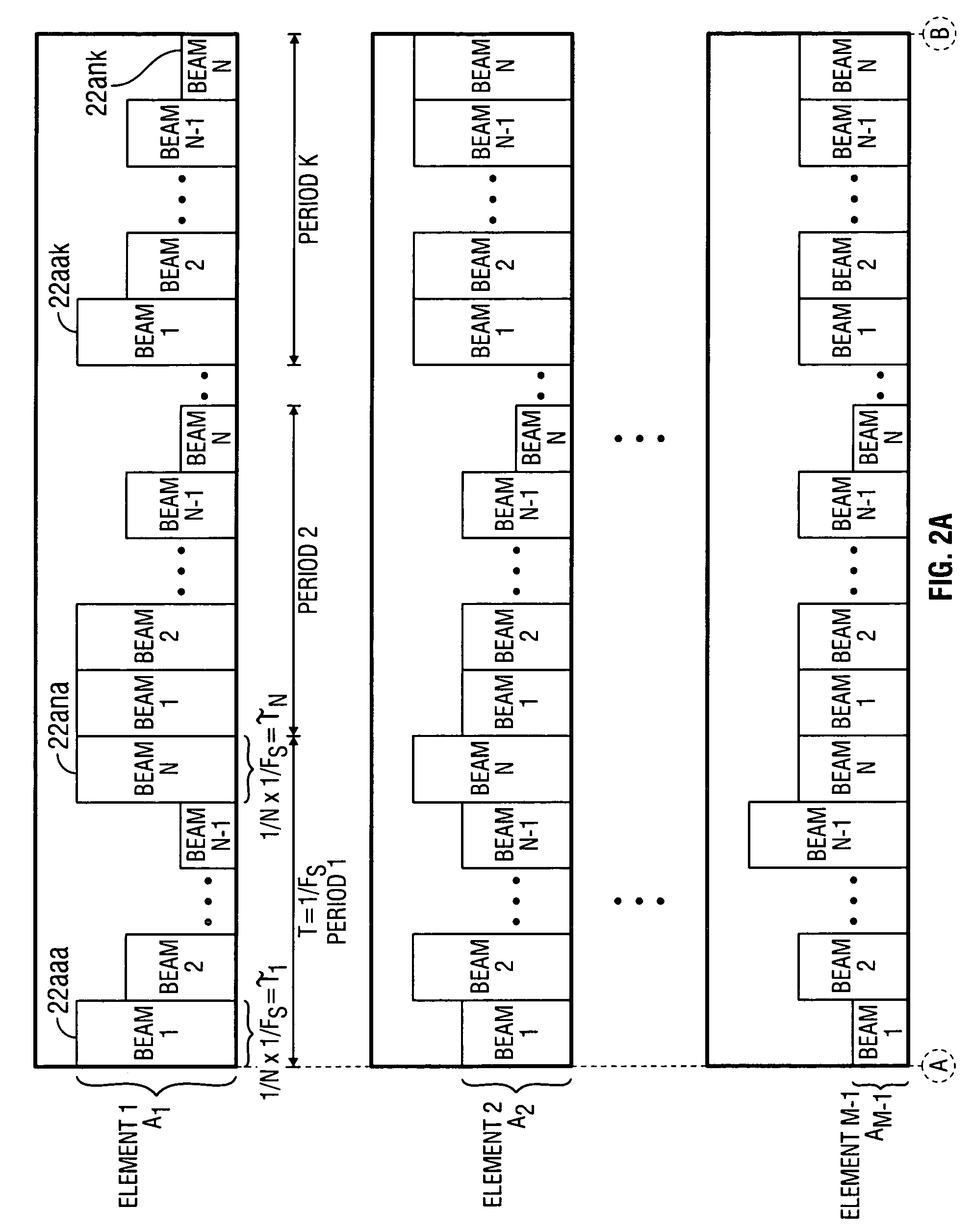Method and apparatus for forming multiple beams
a beam and beam technology, applied in the field of beam forming, can solve the problems of not being able to add more hardware to the circuit board, and the cost of forming a network for each beam,
- Summary
- Abstract
- Description
- Claims
- Application Information
AI Technical Summary
Benefits of technology
Problems solved by technology
Method used
Image
Examples
first embodiment
[0030]With regard to FIG. 4, a first embodiment weighting applicator 30 is depicted. In this embodiment, complex phasor multiplication is used to achieve the required phase shift for aligning each received signal sample, e.g., from element 26a. The received sample from element 26a contains a real (in-phase) component I appearing at complex weighting multiplier input 40i, and imaginary (quadrature) component Q appearing at complex weighting multiplier input 40q. The weight loaded from weighting memory 32 has in-phase component Wi appearing at complex weighting multiplier input 42i, and imaginary (quadrature) component Wq appearing at complex weighting multiplier input 42q. Input 40i is fed to multipliers 44a and 44d; input 40q is fed to multipliers 44b and 44c; input 42q is fed to multipliers 44b and 44d, and input 42i is fed to multipliers 44a and 44c. Multiplier 44a produces intermediate result 46a; multiplier 44b produces intermediate result 46b; multiplier 44c produces intermedia...
second embodiment
[0032]With regard to FIG. 5, weighting applicator 30 is depicted. Instead of multiplying complex phasors as in FIG. 4, a delay is used to align components of a beam. The received sample from e.g., element 26a, is fed into element sample input 54 of weighting applicator 30. Sample input 54 passes sequentially through a series of storage registers 56a through 56z (as shown by shifts to the right), whose outputs 58a through 58z are fed to delay line mux (multiplexer) selector 60. Each shift through the storage registers 56a through 56z imparts a certain amount of delay to sample input 54. Storage registers 56a through 56z are clocked by input sample clock input 62 at a rate equal to the input sampling frequency. One of outputs 58a through 58z, which is selected by delay line mux selector 60 via selector input 64, represents the total delay desired to line up a signal sample, e.g. from element 26a, to a desired phase (depending on the beam to be selected, the particular element sampled,...
PUM
 Login to View More
Login to View More Abstract
Description
Claims
Application Information
 Login to View More
Login to View More - R&D
- Intellectual Property
- Life Sciences
- Materials
- Tech Scout
- Unparalleled Data Quality
- Higher Quality Content
- 60% Fewer Hallucinations
Browse by: Latest US Patents, China's latest patents, Technical Efficacy Thesaurus, Application Domain, Technology Topic, Popular Technical Reports.
© 2025 PatSnap. All rights reserved.Legal|Privacy policy|Modern Slavery Act Transparency Statement|Sitemap|About US| Contact US: help@patsnap.com



